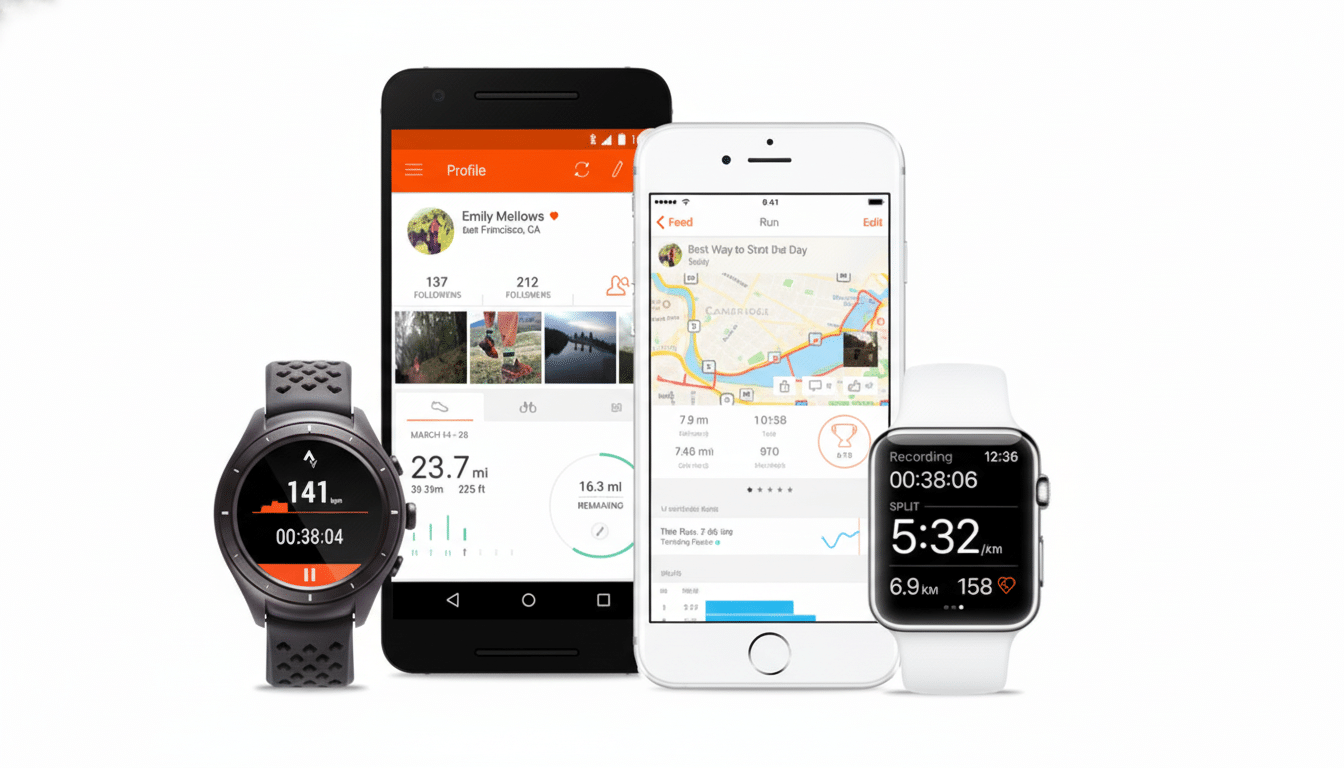Google Fit checks the most obvious boxes, but lots of Android users seek deeper data, coaching and community. If your goals reach beyond step counts, several rivals now provide deeper insights, stronger social features and smarter planning tools that meet you where you train.
From GPS athletes to weightlifters and hikers, there are five standout apps in terms of accuracy, breadth of features and excellent ecosystems. They all sync to most of the leading wearables and with Health Connect by Android, so you can switch without losing your history.

Strava for social athletes and advanced GPS power users
Strava has become the default social network for endurance athletes. The company boasts over 100 million athletes globally, and its Year in Sport reports often release jaw-dropping stats on the continued growth of cycling and running activity logged on the platform. In addition to segment leaderboards, clubs and weekly challenges make solo training a communal experience.
It’s great for GPS sports like running, cycling and hiking, offering robust route planning as well as heatmaps that reveal the most popular paths people use. Premium provides custom routes, live performance metrics and training analytics. Strava plays nice with Garmin, Polar, COROS, Wahoo, Wear OS watches and more, so if you bounce between devices, it’s a smart hub.
Why it’s better than your standard run app: Real-time GPS measurements, leaderboards that actually make you want to go back for more, an unbeatable network effect.
Samsung Health For Comprehensive Daily Monitoring
As an all-in-one dashboard, Samsung Health layers in sleep coaching, stress metrics and guided programs with steps and calories. Pair a recent Galaxy Watch and you also get body composition estimates (courtesy of a BioActive sensor), as well as running metrics such as VO2 max. In places where it’s supported, ECG and blood pressure features add clinical-style checks at the wrist.
Logging of meals and water is built in, and the coaching nudges are proactive rather than in minimalist tracker apps. While it glows brightest with Galaxy hardware, Samsung Health operates on most Android phones and is now syncing data more frequently through Health Connect, making app-to-app transfers more frictionless.
MyFitnessPal For Nutrition And Weight Goals
If body composition is your goal, begin with food. MyFitnessPal has a database of more than 14 million foods, according to company figures, which makes it easy to find a match for what you’re eating with barcode scanning and macro goals that can be customized based on your cutting, bulking or maintenance goal. You enter your current weight and then tell it how much you want to weigh, eventually, and it will give you a nice target for daily calories that lowers as you near completion.

Published research from NIH shows that continuous self-monitoring is linked to greater adherence to weight loss. MyFitnessPal makes it easy to track your calorie intake, and it syncs with all the major wearables: Exercise calories and step data update your daily budget automatically. Premium includes the macro-by-meal perspective, recipe insights and advanced goals.
Hevy For Strength Training And Progressive Overload
By and large, general fitness apps fall down in the weight room. Hevy’s made for lifters, offering a clean log for sets, reps, weight, RPE, supersets and rest timers. You can write your own plans or work from templates, view progress you’ve made with PR tracking and lift-specific charting that makes progressive overload clear.
A lightweight social layer where you can follow your friends and see how others are doing without getting any of the fluff. Crucially, Hevy’s data model is well-equipped to deal with common strength scenarios — like micro-loads or paused reps — that catch-all trackers struggle with. An annual plan is relatively cheap and opens unlimited routines and advanced analytics.
AllTrails for hikers and dedicated trail-running fans
For workouts that get you off your beaten path, AllTrails combines discovery with safety features a step counter can’t match. Company statistics indicate that there are 400,000-plus routes curated worldwide, with details of elevation profiles, recent reviews, difficulty ratings and notes on the best season to do them. Filters can sort out the dog-friendly loops or waterfall vistas or routes with less elevation gain.
Record GPS tracks, download offline mapping for areas with poor signal and access curated lists in national parks. The premium fee unlocks offline use and additional map layers that are definitely worth it if you head beyond cell coverage. Combined with a GPS watch, this creates a strong plan-record-review loop imperative for trail runners.
How to choose the right Google Fit alternative
- Fit the app to your main goal: Strava if you care about GPS and community, Samsung Health for daily wellness, MyFitnessPal for nutrition, Hevy for lifting, AllTrails for outdoors. Thanks to Health Connect by Android, many of these services now have data interoperability, so you can play to their strengths — log food in MyFitnessPal, runs in Strava and the all-up view in Samsung Health — without double entry.
In the end, you don’t have to forsake simplicity in order to develop a sense of depth. Choose the app that enhances your motivation and delivers metrics you’re actually going to use, and let it work its magic.

